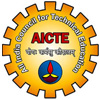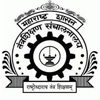Next Trends in the Electronics

Mrs. V. S. Gaikwad.
Head of Department
Electronics and Telecommunication Dept.
AISSMS Polytechnic, Pune
Past few decades have observed a speedy improvement in the performance of silicon-based devices. The credit behind this growth goes to nothing else but the inclusion of new technologies; (nanotechnology specifically) that has allowed compactness and cost reduction.For several years onlysilicon was used in electronics, butconsidering the current advances and availability in the materials, engineering has announced new paths for electronics. Although the traditional silicon electronics will remain as the main focus, roads to the emerging alternative trendsare also cleared. These substitutes include the following:
1. 2-D electronics
Background – The growing research attention towards 2D semiconductors started with a discovery by Geim and Novoselov et al. in 2004, when they reported a new semiconducting material graphene. Carbon atoms in graphene form a hexagonal two-dimensional lattice, and this atom-thick layer draws attention due to its high electrical and thermal conductivity, superior mechanical strength, very high carrier motilities and very high tensile strength.
In 2010, the Royal Swedish Academy of Sciences decided to award the Nobel Prize in Physics for “groundbreaking experiments” in graphene research to Andre Geim and Konstantin Novoselov.
Examples- Transistors, chemical sensors, biological sensors, environmental sensors. Photo detectors, LASERS, and LEDs are some other 2D devices. Several companies around the world, including Samsung and Apple are developing applications based on graphene.
Properties-
- 2D semiconductors hold the potential of application in the harvest of solar energy as the transistors for digital electronics and flexible and transparent substrates.
- Printed graphemesuper capacitors have the potential to makepowerful wearable electronics for a viable tomorrow.
- Graphene have the potential to change electronics, allowing miniaturization, higher performance and cost reduction.
2. Spintronics
Background- Spintronics is known as magneto electronics and is developed from the discoveries in the 1980s, concerning spin-dependent electron transport phenomena in solid-state devices. Until now, spintronic technology has been experienced in information-storage devices, such as hard drives and spin-based transistors. The magnetic layers in the spintronic devices serve as spin polarizers or analyzers separated by non-magnetic layers through which the spin-polarized electrons are transmitted.
 Properties-
Properties-
- The capability to operate four instead of only two, plus, defined logic states results in greater information-processing power, higher data transfer speed, and higher information-storage capacity.
- It is estimated that spin transport electronic devices will be smaller, more flexible, and more tough compared to their silicon counterparts.
- Spintronic devices provide a new mode to manipulate the magnetization of magnetic nanostructures by a spin-polarized current.
Examples- In recent times integrated magnetic/spintronic device microarrays have discovered great potentials in both biomedical studies. Also, they have been broadly used in the manufacture of Magneto resistive Random Access Memories. Motorola has developed the 1st generation 256 Kb MRAM based on a single magnetic tunnel junction devices where the tunneling current depends on spin orientations of the electrodes. Spintronic systems can be used for powerfully storing and transferring data in the field of neuromorphic computing and quantum computing.
Till today, this technology is in the early progress stage. So, regardless of extreme research, we have to wait for a couple of years to see the first commercial spin-based electronic chip.
3. Memristor
 Background– The memory–resistor i.e. Memristor is a fundamental two-terminal circuit element defined as a nonlinear relationship between the integral of the voltage and the integral of the current. Each electronic circuit is made up of three passive components such as inductors, capacitors, and resistors, but there is a fourth component called memristor; these are semiconductors used to create low power consuming storage devices. Memristors are non-volatile components that have very high storage as well as speed. As the name directs, memristor performs equally like a conventional resistor but it has memory in the sense that its instantaneous resistance depends on the history of its input. In 2007, a group of researchers from HP Labs found that the memristance effect can be present in nanoscale systems under certain conditions. Many researchers believe that memristors could finish electronics as we know it and begin a new era of “ionics”.
Background– The memory–resistor i.e. Memristor is a fundamental two-terminal circuit element defined as a nonlinear relationship between the integral of the voltage and the integral of the current. Each electronic circuit is made up of three passive components such as inductors, capacitors, and resistors, but there is a fourth component called memristor; these are semiconductors used to create low power consuming storage devices. Memristors are non-volatile components that have very high storage as well as speed. As the name directs, memristor performs equally like a conventional resistor but it has memory in the sense that its instantaneous resistance depends on the history of its input. In 2007, a group of researchers from HP Labs found that the memristance effect can be present in nanoscale systems under certain conditions. Many researchers believe that memristors could finish electronics as we know it and begin a new era of “ionics”.
 Properties-
Properties-
- High speed transistors and flexible displays for mobile devices.
- Ultrasensitive and label free sensors and more efficient energy storage devices.
Examples–
Useful in human integrated wearable devices that monitors daily physiological information and communicate data wirelessly. Integrated logical transistors and wireless circuits, multifunctional sensors, energy conversion, and storage devices, etc. to form these applications rely on the continuous development of material synthesis and fabrication techniques.
4. Organic Electronics
 Background– Organic electronics deal with organic materials, such as polymers or small molecules. The resources used in this kind of technology are carbon-based, which are similar to the molecules of living things. Another class of organic semiconductors is polymers which are soluble in common solvents such as Chloroform or Xylene and their films can be formed by even simpler methods of spin coating.
Background– Organic electronics deal with organic materials, such as polymers or small molecules. The resources used in this kind of technology are carbon-based, which are similar to the molecules of living things. Another class of organic semiconductors is polymers which are soluble in common solvents such as Chloroform or Xylene and their films can be formed by even simpler methods of spin coating.
Properties–
- Cost effective, mechanical flexibility, adaptable to synthesis processes, and lightweight as compared to conventional electronic materials making organic electronics an appropriate choice for definite applications.
Examples– The curved television screens, displays for smartphones, colored light sources and portable solar cells which exist commercially, depend on organic semiconductors; demonstrating the industrial maturity of organic electronics. In fact, several high-tech companies, including LG Electronics and Samsung, have financed in low-priced and high-performance organic-electronic devices.
It is predictable that the organic electronics market will grow rapidly in the coming years and clearly the scope and exposure in the field of electronics can be said to be on peak.
Connect with us to know more about the field and opportunities in it and let us help you accelerate you career



